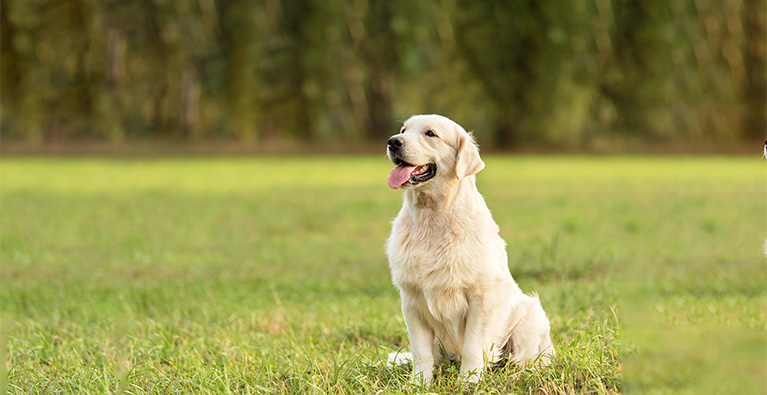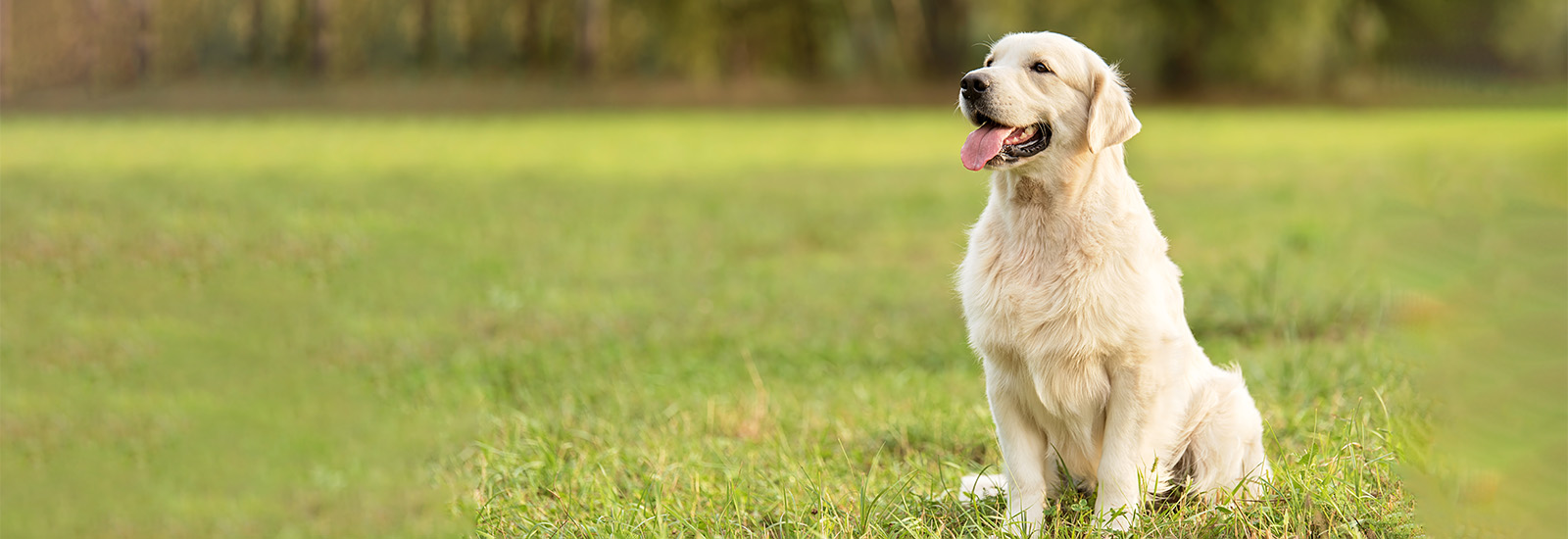Teaching your dog to sit
“Sit” is one of the most important commands that a dog should know. The easiest way to teach it to your pet is to hold a treat above its head and gradually move it backwards. We will show you what to do step by step.
Why is the command “Sit” so important?
Every dog should learn the command “Sit”, because it is so often useful in day-to-day life. It can, for example, be a good idea to get your dog to always sit for a short while before crossing the road. It also makes things much easier when you want to put your dog on a lead without any fuss. In addition, it is very practical to have your pet sitting next to you when you have to queue or wait for something, or have a quick chat with someone in the street.
It can also take a dog’s mind off things and calm it down when it is in a stressful situation and hears the command from its owner. If the dog has learned to follow the command “Sit!” even from a distance, it may also prevent it from running away when it is following a scent and avoid the risk of it disappearing.
How can I teach my dog to sit?
A dog must be able to understand what its owner wants it to do. Therefore, every command should be meaningful and divided into individual steps. For the command “Sit” it is best to use the following approach:
- Have some treats ready
For most dogs, there is no better motivation than treats. Do not make a habit of giving these to your dog just for the fun of it. There are a variety of ways to use them effectively during short training sessions every day. Sometimes some treats are more popular than others. For training, you should use the tastiest ones, because they will attract more attention from your dog. But remember not to overdo things. If your dog receives a generous number of treats, its daily amount of food should be reduced a little.
- Choose the right time and place
Dogs like to be distracted, especially when they are puppies. When practising a new command, the environment should be as stimulus-free as possible – so preferably with no other dogs around. It is also advantageous if the dog has already been able to play a little and let off steam. It is then a good time to get its attention.
- Take a treat in your hand
Call your dog over or go up to it. Show your pet that you have a treat in your hand and get it interested. Stand directly in front of your dog, hold your hand above its head and slowly move it backwards. The dog will lift its head and when it cannot go any further, will most probably slowly lower its bottom. You can give your dog the treat right away or, if it is obvious that it is about to reach a sitting position, you can wait for that moment. It is, however, important not to wait for several seconds because things seem to be going well. If it gets the treat when it is already starting to get up again, it may well associate the reward with standing up.
- Verbal commands and visual signals
At first, you should give the command “Sit” at the precise moment when your dog’s bottom touches the ground. It will thus know exactly what is being rewarded for. Later on, you should use the command to ask your dog to sit. Ideally, you should also introduce a visual signal at an early stage. Most people opt for an upwardly extended index finger. Not only is it very convenient to have your dog respond without you having to shout loudly in the midst of other people, for example, but it can also be useful for later on in your pet’s life. If an older dog is no longer able to hear well, visual signals can be a big advantage.
- Keep practising and gradually increasing your demands
You should never ask too much of a puppy. Young dogs have very short attention spans. After a minute or two, you may lose your pet’s attention completely. Simply be happy when you see the first results and make sure that you keep at it. Plan three to four short learning sessions every day. You will see that things gradually work better and better. You can then start to slightly increase the challenge by getting your dog to sit for a longer period of time or by giving the command from a greater distance.
- Do not forget the release command
The first few times you are bound to simply be happy if your dog does what it is supposed to do when you give the sit command. You should then praise your pet, show that you are pleased and give it a treat. Before long, however, it is important to give a release command, such as “OK”. The dog will then know that is has been “released” from the command. This can be after a few seconds, or even after a minute or two. A longer period of sitting can be very practical when you are out and about or at the dog training ground.
Video about the command “Sit”
Would you like to see the use of the command “Sit” on video? Animal trainer Fränzi Lüttich demonstrates how it works with Weimaraner Sky:
You may also like this

Teaching your dog the commando "Stay"
How to practice the command "Stay" with your dog

Teaching your dog the commando "Down"
“Down!” is one of the most important commands a dog should master

DogDance
DogDance is all about fun and creativity

Keeping your dog occupied
Occupation is important for a dog





